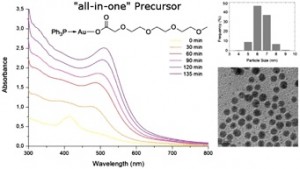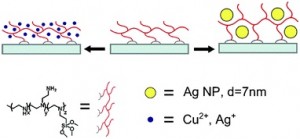The need for a hydrogen storage material that can store hydrogen reversibly, with little or no kinetic barrier, and at ambient conditions remains a great challenge for researchers in this field. In order to progress towards a future hydrogen economy, hydrogen storage materials must also be practical for mobile applications and of course be economically viable.
Many different materials have been proposed for hydrogen storage. These range from physisorption materials such as activated carbons, zeolites and Metal Organic Frameworks (MOFs) to materials based on chemisorption such as metal hydrides, ammonia boranes and alanates. The hydrogen binding mechanism of chemisorption materials is through the formation of strong covalent bonds with hydrogen and so even though they have high hydrogen storage capacities, the drawback is that due to their high hydrogen binding enthalpies, the materials must be heated to remove H2.
To improve the unfavorable thermodynamics and poor kinetics of complex hydrides, researchers have successfully applied a ‘multicomponent’ strategy whereby two compounds are mixed together to form a multinary phase. The mixed LiNH2–MgH2 system is a successful example of the employment of the ‘multicomponent’ strategy to improve the characteristics of complex hydrides for hydrogen storage. Applying this method to metal amidoborane systems is an exciting prospect.
With this in mind, Chen et al. synthesized a Li–Na mixed amidoborane, Na[Li(NH2BH3)2] using a wet-chemical method. Using first-principles techniques, the team were able to explore the likelihood of the existence of multicomponent Li–Na amidoboranes with varying Li/Na ratios. They discovered that the dehydrogenation temperature of Na[Li(NH2BH3)2] is lower than that of lithium or sodium amidoboranes and determined that this could be due to a stronger dihydrogen bond interaction and a moderate hydrogen atom removal energy. They also proposed the mechanism for the first-step dehydrogenation.
To find out more, read the Dalton Transactions full paper…
Li–Na ternary amidoborane for hydrogen storage: experimental and first-principles study
Wen Li, Ling Miao, Ralph H. Scheicher, Zhitao Xiong, Guotao Wu, C. Moysés Araújo, Andreas Blomqvist, Rajeev Ahuja, Yuanping Feng and Ping Chen
DOI: 10.1039/C2DT11819J


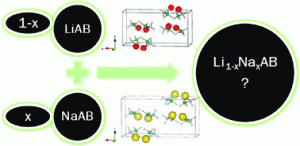










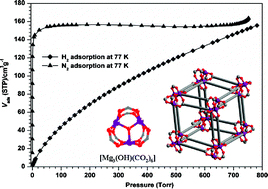

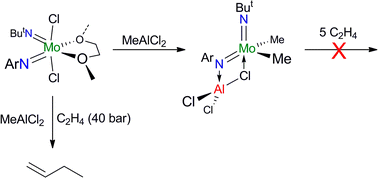 Despite the fact that the catalytic activity of Cr and W imido complexes in ethylene dimerization processes has been studied by various authors, to date the analogous Mo catalysts have not been studied. In this HOT article, Dyer et al. set out to fill this gap in our knowledge and several molybdenum bis(imido) complexes were tested for ethylene dimerization catalysis in combination with EtAlCl2, showing moderate activity when bulky aryl substituents at the imido ligand are employed. In contrast, when MeAlCl2 is used the activity of the catalyst decreases considerably. To understand the role of the activator in these processes the authors have determined the molecular structures of several complexes derived of the reaction of bis(imido) molybdenum compounds with different aluminium halide reagents.
Despite the fact that the catalytic activity of Cr and W imido complexes in ethylene dimerization processes has been studied by various authors, to date the analogous Mo catalysts have not been studied. In this HOT article, Dyer et al. set out to fill this gap in our knowledge and several molybdenum bis(imido) complexes were tested for ethylene dimerization catalysis in combination with EtAlCl2, showing moderate activity when bulky aryl substituents at the imido ligand are employed. In contrast, when MeAlCl2 is used the activity of the catalyst decreases considerably. To understand the role of the activator in these processes the authors have determined the molecular structures of several complexes derived of the reaction of bis(imido) molybdenum compounds with different aluminium halide reagents.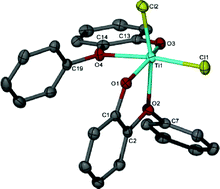 In this HOT article, several new Ti(IV) complexes bearing aryloxy or alkoxy ligands have been prepared and evaluated as catalysts for the oligomerization/polymerization of ethylene. Obviously, polyethylene is the major product but ethylene oligomers also result, ranging from dimers to higher oligomers. The results indicate a number of different active species are formed upon activation, with oligomers likely arising through a metallacyclic mechanism.
In this HOT article, several new Ti(IV) complexes bearing aryloxy or alkoxy ligands have been prepared and evaluated as catalysts for the oligomerization/polymerization of ethylene. Obviously, polyethylene is the major product but ethylene oligomers also result, ranging from dimers to higher oligomers. The results indicate a number of different active species are formed upon activation, with oligomers likely arising through a metallacyclic mechanism.